Swiss Meringue Buttercream is delicious, versatile, and the BEST frosting to use for layer cakes. Learn how to make it with this Swiss Meringue Buttercream recipe and photo tutorial!
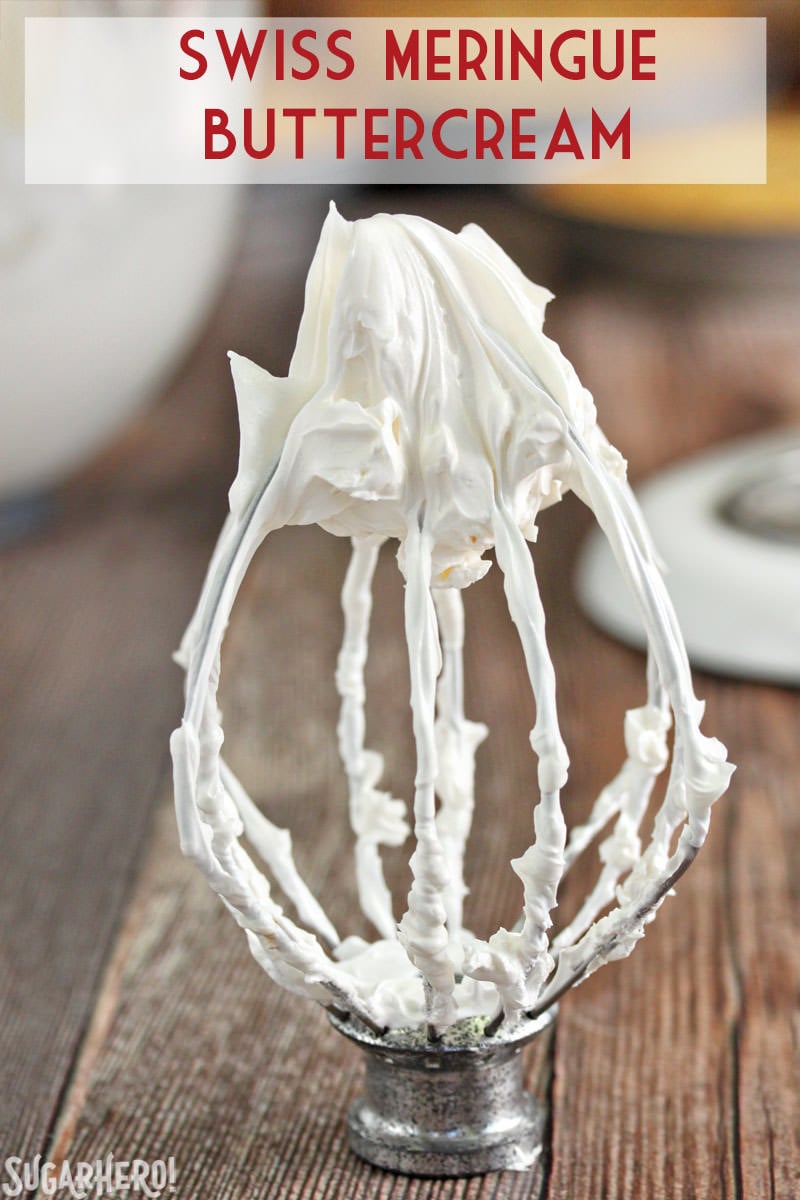
I use Swiss Meringue buttercream in my cake recipes a lot. I used to be an Italian Meringue girl (more on the differences between these below) but in the past few years I’ve migrated almost entirely to Swiss Meringue.
Since I do feature Swiss Meringue recipes so often, I regularly get comments, question, and troubleshooting requests. I don’t think Swiss Meringue is hard, but it’s definitely more labor-intensive (and less familiar) than your typical butter-and-powdered-sugar American Buttercream. So I thought it was time to do a full photo tutorial, showing how to make Swiss Meringue buttercream. If you’re just here for the recipe, there’s a printable recipe card down below, so please scroll down for that. If it’s your first time making Swiss Meringue, or if you’ve had a traumatic Swiss Meringue experience in your past, I hope you find this tutorial helpful. Here we go!
What Is Swiss Meringue Buttercream?
- Swiss Meringue Buttercream refers to a specific type of frosting made from egg whites, sugar, and butter. The egg whites and sugar are whisked together and heated up, then whipped into a meringue. Once the meringue cools, butter is added to make the buttercream. Ta-da! There are a few other types of buttercream you’ve probably also heard of:
- Italian Meringue Buttercream is similar to Swiss Meringue, but instead of heating the egg whites and sugar together, the sugar is combined with water or other liquid, and cooked to soft-ball stage. Then the hot sugar syrup is streamed into the egg whites, and the rest of the recipe is similar to Swiss Meringue. Italian Meringue is actually the most stable of the meringue buttercreams, and it used to be my go-to. But it’s a little more finicky, and I’ve come to prefer the convenience of Swiss Meringue in most instances.
- French Meringue Buttercream is prepared with egg yolks instead of egg whites. As a result, it is really rich and luscious. It’s often a little rich for my taste, but when it’s combined with the right components, it can be amazing.
- German Buttercream is a bit of a hybrid beast! It’s made with a pastry cream base, meaning it has egg yolks, milk, and starch (often cornstarch) in addition to the usual sugar and butter. It makes a great cake filling, but doesn’t hold up as well as the others when piping.
- American Buttercream is the stuff kid dreams are made of. It’s what I grew up eating on birthday cakes: powdered sugar, butter, and a touch of milk. It’s very sweet, and it does form a crust as it dries, which can be good or bad depending on your decorating goals.
How Do I Make Swiss Meringue Buttercream?
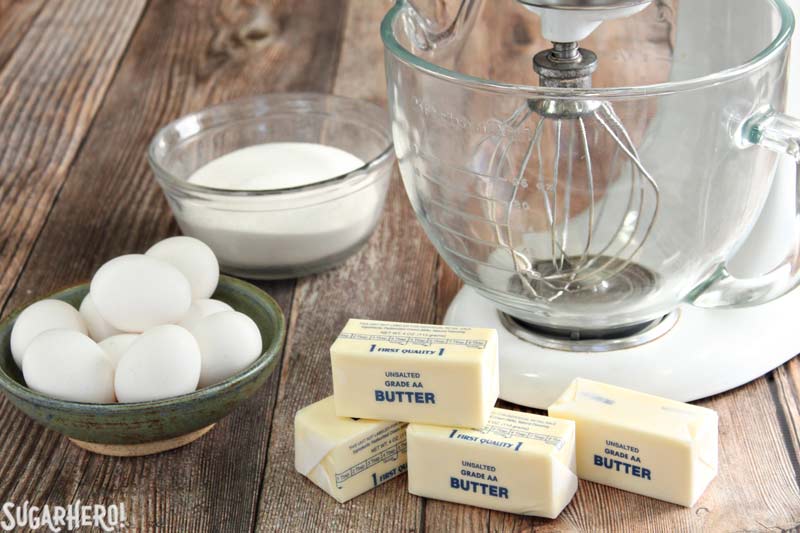
The basic ingredients of a Swiss Meringue Buttercream are egg whites, granulated sugar, and butter. I always add a bit of salt and a flavoring extract, but at heart, these 3 ingredients are all you need. You’ll also need a mixer–ideally, a stand mixer with a whisk attachment. In a pinch, a hand mixer with whisk attachments will work as well.
The egg whites should be at room temperature, and the butter should be cool but softened. What I mean by this is that when you press into a stick of butter, your finger should be able to make an indentation, but it should still feel cool-ish to the touch. If it’s very soft, warm, and greasy, it will be harder for your buttercream to come together in the end. For sugar, I always use pure cane sugar in all of my baking and candy making.
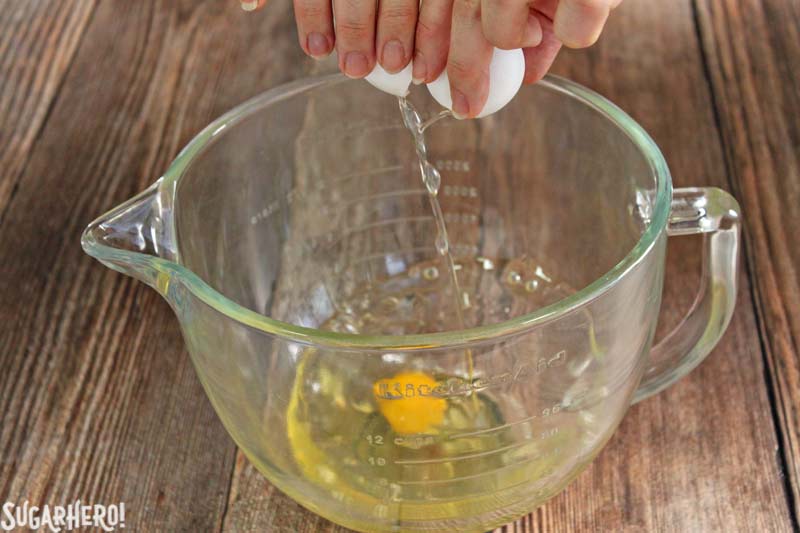
Begin by separating the egg yolks from the whites, and place the whites in a clean, dry mixer bowl. Egg whites don’t whip up properly if they come into contact with fat, so it’s important that the bowl be clean from all grease, and that there are no bits of yolks in the whites. You can save those yolks to make custard, ice cream, or French meringue!
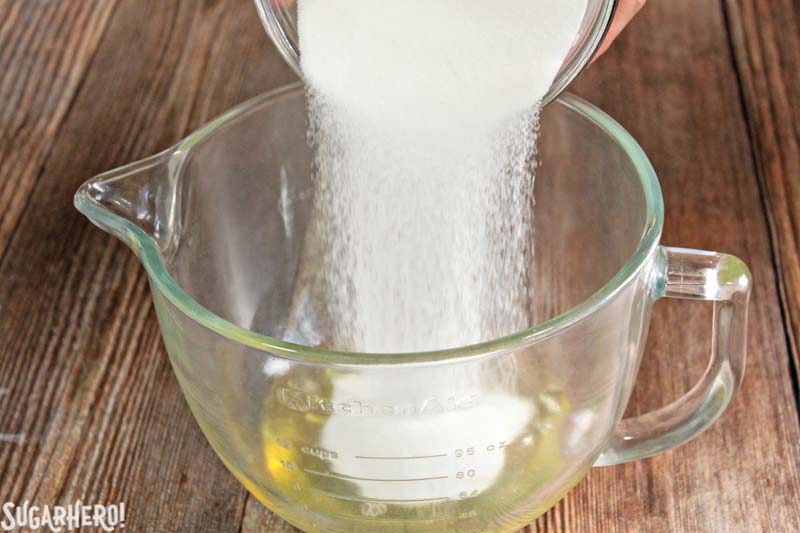
Add the granulated sugar to the egg whites in the bowl.
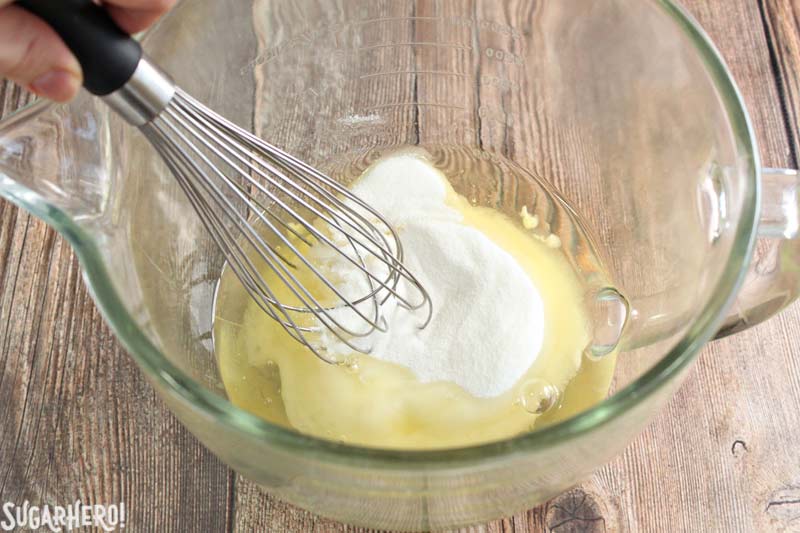
Whisk, baby, whisk! Give the two a good mixing so that there are no dry spots of sugar.
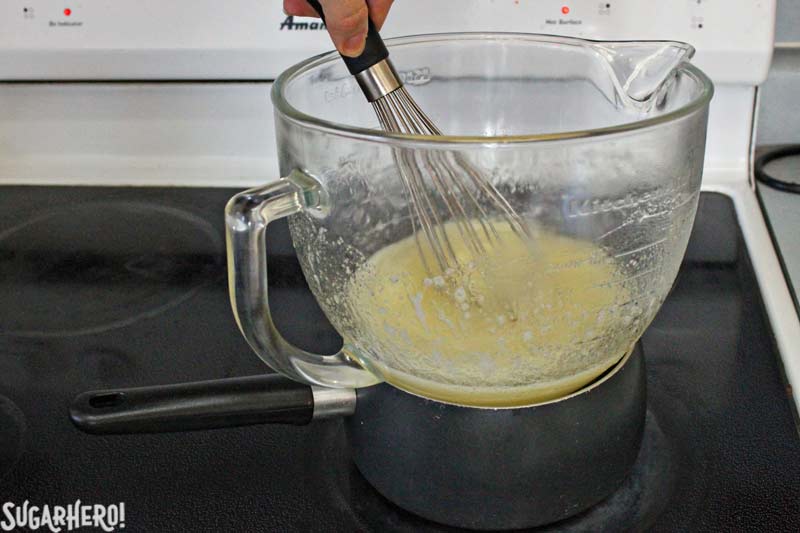
Fill a saucepan with at least an inch of water, and place the pan over medium heat. Bring the water to a simmer, then place the mixing bowl over the pan of simmering water. Ideally, you’ll use a pan/bowl combination where the bowl can tightly fit over the top of the pan, without the bottom of the bowl touching the water in the pan. You can also use a bain marie to heat the egg whites and sugar, then transfer the mixture to your mixing bowl. I just like to use the bowl whenever possible, to prevent dirtying an extra dish.
Whatever setup you use, heat the whites and sugar together over the pan of simmering water, whisking often. Heat and whisk the mixture until the sugar melts, it becomes frothy, and it is hot to the touch. (Not warm! Hot!)
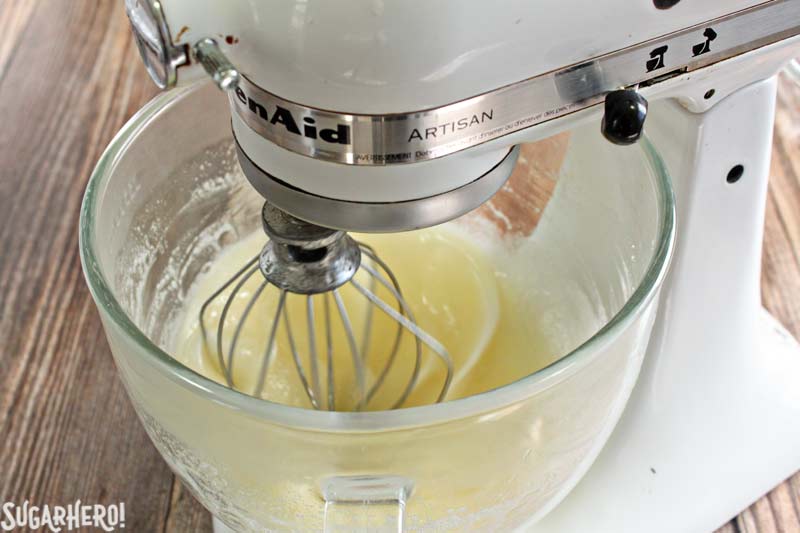
Place the mixing bowl on your stand mixer, and using a whisk attachment, whip it. Whip it goooooood.
You can use a hand mixer to make this buttercream, but you will be at it a long time. Everything takes longer with a hand mixer, and I imagine this could be a 45-60 minute process. Don’t let that stop you, if you want to give it a try–just know what you’re getting in to!
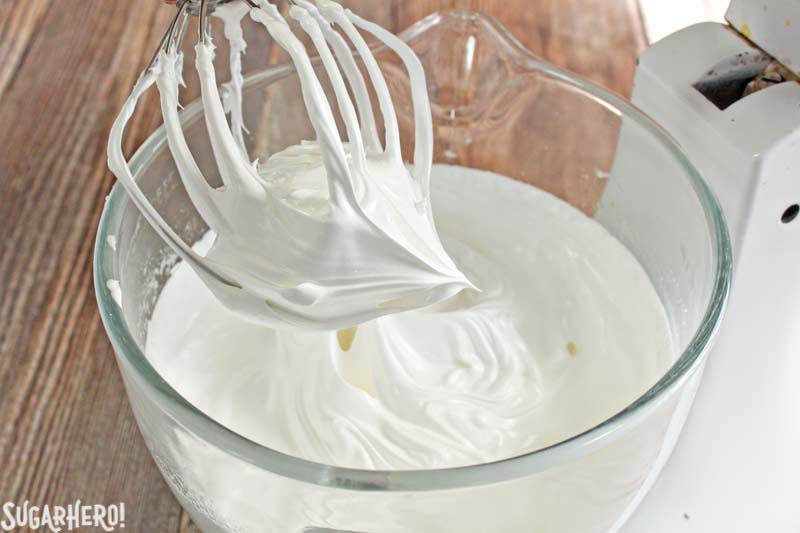
Whip the egg whites at medium-high speed until they become very thicky, shiny, white, and stiff. You also want them to be room temperature. If they’re still hot to the touch–even if they look white and stiff–they will melt the butter when you add it, and that’s no good. So whip until the whites are cool and gorgeously stiff and shiny. Depending on your mixer and the ambient temperature, this could take 10 minutes, or up to 25 minutes.
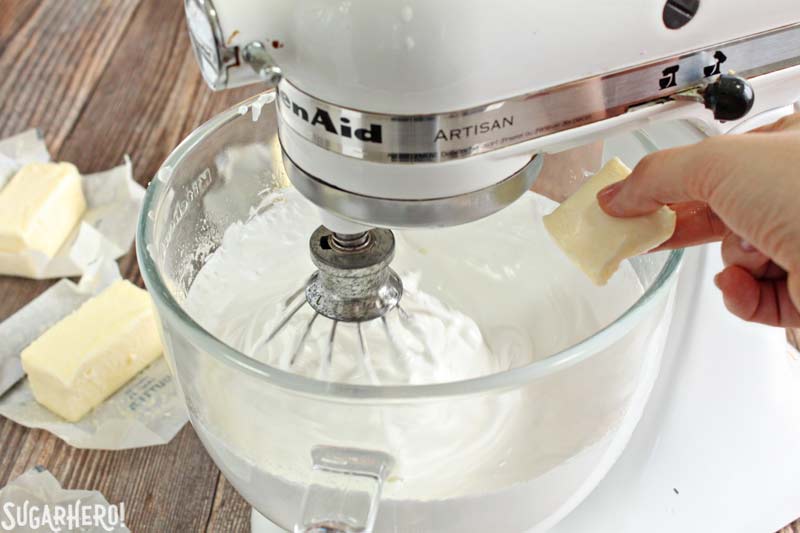
Once the whites are room temperature and stiff, add the cool-but-soft butter a tablespoon at a time, while the mixer runs on medium speed. It’s important to add it slowly, to give everything time to emulsify properly. Take your time! Once half of the butter is added, stop the mixer, scrape down the bottom and sides, and continue. As you add more butter, the buttercream will start to get thinner and look more liquidy.
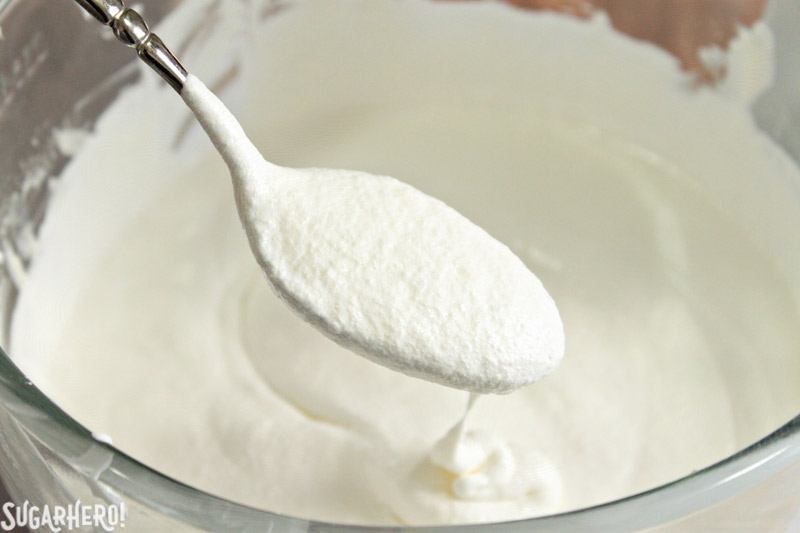
Now, this is the part where you’ll start writing me a mean email in your head. Not infrequently, once most or all of the butter is added, you might see this–a hot mess. The buttercream will be thin, watery, and have an unappealing curdled appearance. This is normal! Delete that imaginary email. Just keep whipping. Repeat after me: just. keep. whipping. 9 times out of 10, turning the mixer on to medium-high and letting it go for 3-5 minutes after all of the butter is added will solve your problem. Sometimes it just needs a good whippin’ to emulsify all the fats and give you a luscious buttercream.
If you’ve whipped it for 5 minutes with no change in appearance, there’s a chance the whites were too warm when you added the butter, or the butter was too warm/greasy. In that case, refrigerate the bowl of frosting for about 10 minutes. You don’t want it to be cold–just chill it a bit, then try whipping again. Unless there’s been a massive measuring or procedural mistake, this will solve your buttercream problems.
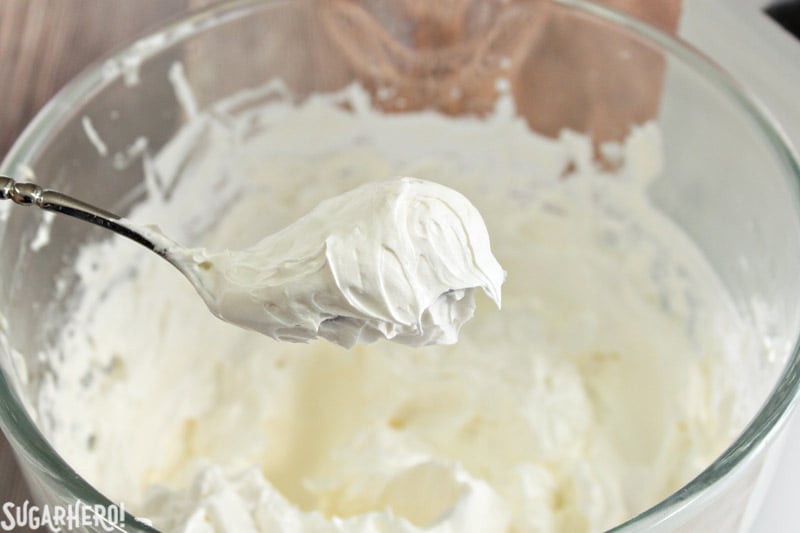
And THIS is what you’ll end up with! A gorgeously fluffy buttercream that is stable enough for big layer cakes, but tastes light and fresh.
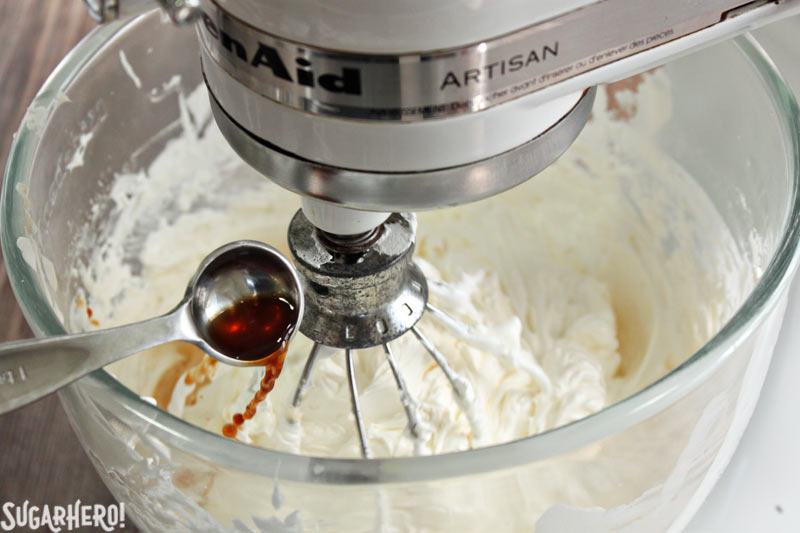
I like to add flavorings after the buttercream is made. With things like salt and vanilla, that’s less important, but for other, stronger flavors, it can be hard to gauge how much to add before the buttercream is whipped into its final state. So once it’s finished, turn the mixer to medium, add your flavorings, give it a taste, and adjust as needed. Flavoring extracts and emulsions are the most common way to flavor Swiss Meringue buttercream, but I’ve included a few other ideas down below.
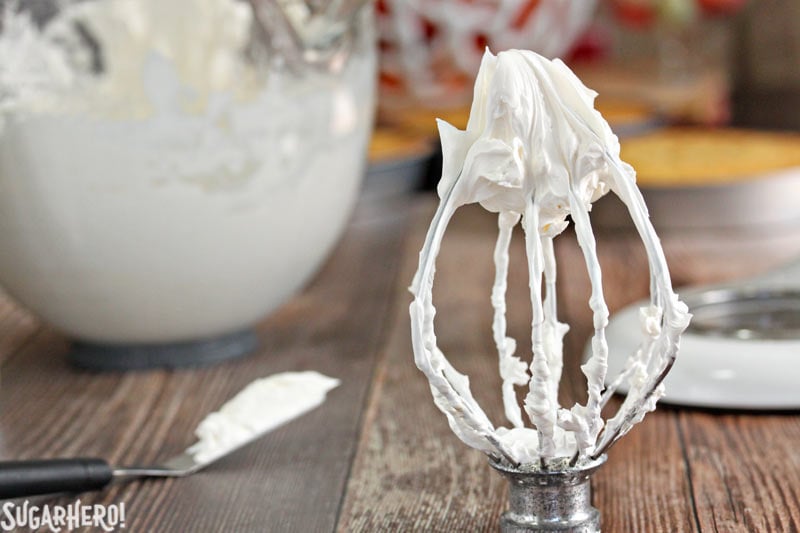
Your Swiss Meringue Buttercream is now ready to be used! If you’re not going to use it right away, you can store it in the refrigerator or freezer, in an airtight plastic container or in zip-top gallon plastic bags. If it is refrigerated or frozen, let it sit at room temperature until completely thawed, then re-whip with the whisk attachment until it is once again smooth. This buttercream does become spongy as it sits, so even if you wait a few hours between making it and decorating your cakes, you’ll probably want to give it a quick whip for the optimal texture. If you find that you are getting a lot of air bubbles in your frosting, try running the mixer on low speed for awhile, to make it silky smooth.
💗More Frosting Recipes You’ll Love
- Rainbow Frosting Recipe
- Lime Cream Cheese Frosting
- Cinnamon Buttercream
- Strawberry Buttercream
- Cookie Dough Frosting
- Red Velvet Fudge Frosting
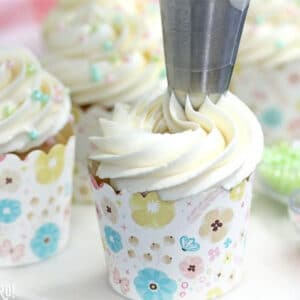
The EASIEST Swiss Meringue Buttercream
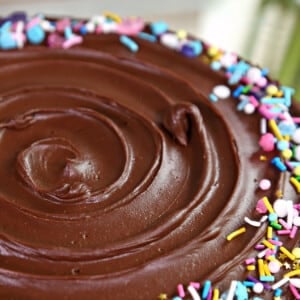
Chocolate Sour Cream Frosting
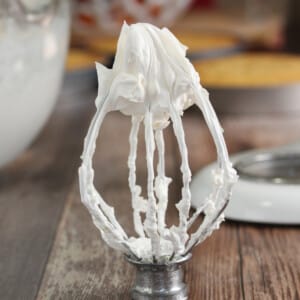
Swiss Meringue Buttercream Recipe
Ingredients
- 9 large egg whites, at room temperature
- 14 oz granulated sugar, (2 cups)
- 1 lb unsalted butter, soft but still cool
- 1 tbsp vanilla extract
- 1/4 tsp salt
Instructions
- Combine the egg whites and the granulated sugar in the bowl of a large stand mixer, and whisk them together. Choose a small saucepan that lets you fit the base of the stand mixer snugly into the top of the saucepan—this is your makeshift hot water bath. (Alternately, you can use a different bowl or an actual bain marie and then transfer the mixture to a mixing bowl once it’s heated.) Add an inch of water to the bottom of the saucepan, and bring the water to a simmer.
- Place the mixing bowl on top of the saucepan, making sure that the bottom isn’t in contact with the water, and heat the egg white mixture. Whisk frequently so that the egg whites don’t cook. Continue to heat the whites until they are hot to the touch, and when you rub a bit between your fingers, you don’t feel any grittiness from the sugar. Once the whites are hot, transfer the mixing bowl to your mixer and fit it with a whisk attachment.
- Beat the whites on medium-high speed until they are a shiny, stiff, voluminous meringue, and are no longer warm to the touch—feel the outside of the bowl, and make sure that it is around room temperature. Depending on your mixer and the temperature of your environment, this may take 15-20 minutes, or more. Reduce the speed to medium-low and add the softened but cool butter in small chunks, a tablespoon at a time, making sure to wait in between additions. It may separate or look a little gloopy at this point—fear not. Once all of the butter is added, increase the speed again and whip until it comes together and is light and fluffy. If, after 5 minutes, it hasn’t come together, refrigerate the mixing bowl for 5-7 minutes, to cool the mixture down, and whip it again until it has thickened and is smooth and silky. Add the vanilla extract and salt.
- The buttercream can be made in advance and kept at room temperature if you’re going to use it the same day, or refrigerated. If it has been chilled, let it sit at room temperature until completely soft, then re-whip it to get the smooth texture back before you use it.
Measuring Tips
Our recipes are developed using weight measurements, and we highly recommend using a kitchen scale for baking whenever possible. However, if you prefer to use cups, volume measurements are provided as well. PLEASE NOTE: the adage “8 oz = 1 cup” is NOT true when speaking about weight, so don’t be concerned if the measurements don’t fit this formula.
Want to learn more about baking measurements and conversion?
Nutrition
Flavor variations for Swiss Meringue Buttercream:
The easiest way to flavor buttercream is to add a flavoring extract. Depending on the strength, you can add anywhere from 1 tsp – 1 tbsp to the buttercream. Start conservatively–you can always add more to taste, but you can’t take it back if it’s too strong! You can also add flavoring oils, but remember those are much more concentrated, so use them sparingly. Vanilla, almond, coconut, lemon, orange, and peppermint are all wonderful additions to buttercream.
Chocolate buttercream: melt 8 oz of dark chocolate in the microwave. (I like to use a really bittersweet variety, but semi-sweet will work too). Let the melted chocolate cool to room temperature, then add it to the finished buttercream. Mix on low speed until incorporated, and scrape down the sides well.
Fruity buttercream: add 1/2 cup of good-quality fruit preserves to the finished buttercream. Add slowly, a spoonful at a time, to give it time to incorporate. The better the preserves, the better the flavor of the finished buttercream! You can also pulverize freeze-dried fruit to make a fruit powder, and add the powder to buttercream.
Nutty buttercream or praline buttercream: Add 1/2 cup of ground nuts (pistachios or hazelnuts work very well) or praline paste to the finished buttercream. The oils in the paste will soften the buttercream, so this works best as a cake filling.
Coffee buttercream: Coffee extract works well, but if you don’t have that, you can use instant espresso powder, mixed with just a bit of water, to make a very strong coffee paste, and add that to the buttercream.
I’d love to hear your feedback if you give it a try! Have questions? Suggestions for other pastry photo tutorials I should do? Leave a comment down below!
The Easiest Swiss Meringue Buttercream:
If this recipe seems a little too complicated, you’ve got to try this super-easy variation: The Easiest Swiss Meringue Buttercream!
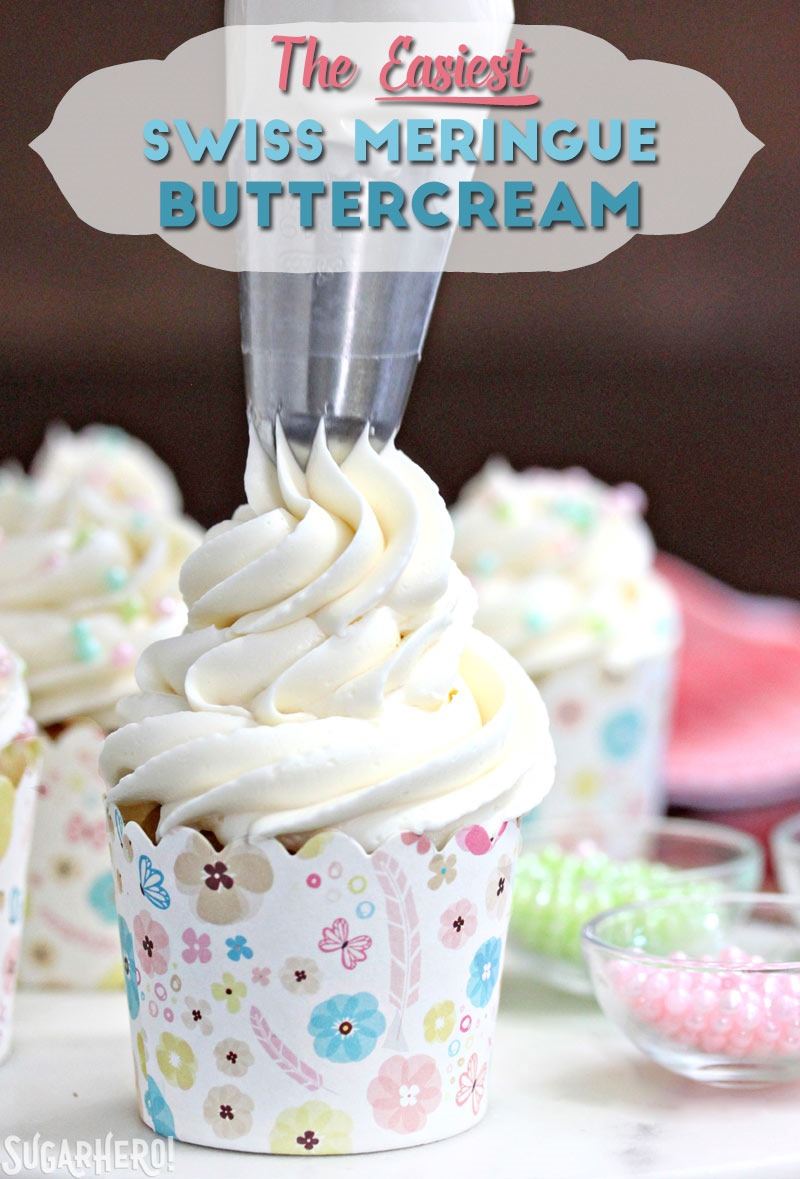


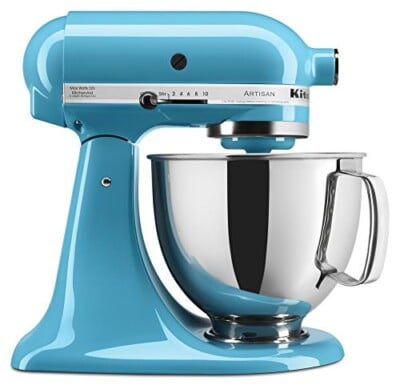
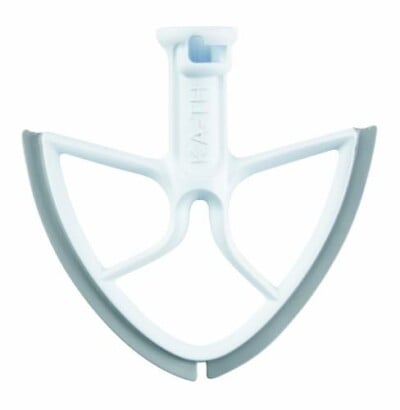

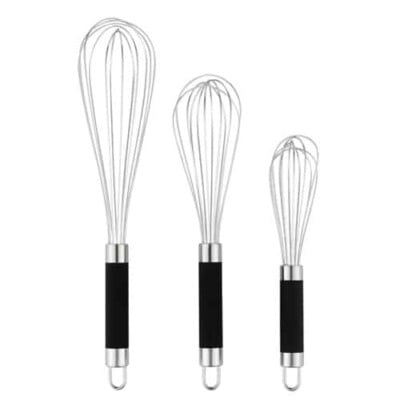
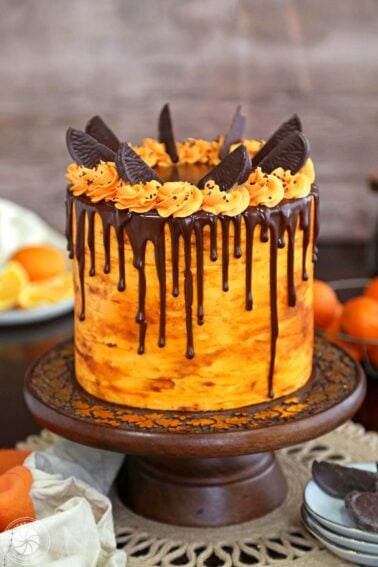


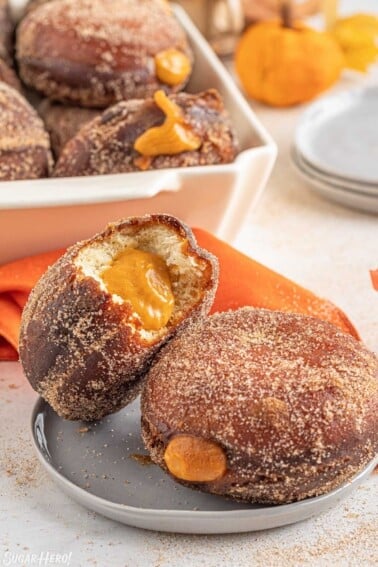












How long can I store this in fridge for?
Or how long is it good for?
Hello Dakota! You can definitely store this buttercream. It should stay fresh in the fridge for 2-3 weeks or 6 months in the freezer. I hope that helps! All the best.
I am getting ready to make a wedding cake in CA at the beggining of July. The temps will be above 90 and it’s an outdoor party! The bride wants red velvet cake. I have been experimenting and the frosting is giving me nightmares. Could I use the butter flavored shortening and cream cheese instead of the butter for the swiss meringue?
Hi Amaryllis. I would definitely recommend mixing shortening with the butter. The shortening will help a lot with stability. Cream cheese tends to make the buttercream softer. I’d use as little cream cheese as possible. I recommend making the full recipe as written. Then, in a separate bowl, beat 4oz of cream cheese until soft. Next, add the prepared buttercream to the softened cream cheese and continue to beat until combined. I wouldn’t recommend adding more than 4oz for stability purposes. If you want more cream cheese flavoring I would suggest adding a cream cheese emulsion so that the buttercream will keep its stability. I love LorAnn Cream Cheese Emulsion: https://amzn.to/3qgbcLG. Start with a teaspoon and more until you achieve your desired depth of flavor. I hope that helps! I would love to hear how it goes!
One more thought . . . When blending shortening and butter, you can substitute up to half of the butter with shortening. However, my personal preference is not to replace more than 1/3. Also, I’d recommend using a high ratio shortening because it is lighter and less greasy than traditional Crisco. It can be purchased online or in cake supply store and you’ll notice that it will help the frosting stay fluffier without the grease.
Love this recipe!
So glad you found it Sherry! Happy baking!
Hello,.
I’ve tried a few SMBs and this one is my favorite. Juste the right amount of egg whites to butter ratio. Not too buttery, just perfect.
Thank you.
You’re welcome! Thanks for the great review. All the best to you!
I tried your traditional Swiss buttercream recipe and it worked…not a recipe previous to finding yours, however! I decided to make this type of buttercream (Swiss) rather than frosting a cake with powdered sugar (that I didn’t have on hand).
Thanks
CC
Hi! I’m so glad you enjoyed the recipe. Thank you for the rating and review. I really hope it continues to come in handy for you. All the best!